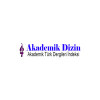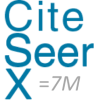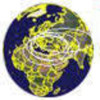Research Article
Review
Aim & Scope
LimnoFish (Journal of Limnology and Freshwater Fisheries Research) is an international, open access and periodical scientific peer-reviewed journal, which is published three times a year, in April, August and December. LimnoFish is focused on fisheries management, ecology, biology, aquaculture, disease, socio-economy and fish processing technology topics related to only inland waters.
This journal publishes research article, short communication, case report, review and letter to the Editor written in English and Turkish languages.
LimnoFish comprises the following topics:
- Fisheries Management
- Biology
- Ecology
- Genetic
- Aquaculture and Disease
- Fish Processing Technology
- Fisheries Socio-Economics
Author Guidelines
Article Writing Rules
Article Disposition: The Articles should be prepared according to the following disposition.
Research Article | Short Communication | Case Report | Review | Letter to Editor |
Abstract | Abstract | Abstract | Abstract | Abstract |
Keywords | Keywords | Keywords | Keywords | Keywords |
Introduction | Introduction | Introduction | Introduction | FREE CONTENT |
Materials and Methods | FREE CONTENT | CASE | FREE CONTENT | |
Results | ||||
Discussion | References | References | References | |
Acknowledgements* | Acknowledgements* | Acknowledgements* | Acknowledgements* | |
References | References | References | References | References |
*: It can be used if needed
Page Setup: Manuscripts
should be written in Microsoft Word (.doc and .docx), Rich Text Format
(.rtf) or OpenOffice (.odt). A space of 2.5 cm should be left on all
sides of the page and 1.5 line spacing should be used throughout the
text. The start of each paragraph should be indented 1.25 cm and the
text alignment should be justified. Page numbers should be centered at
the bottom of the page. Times New Roman font style and 12 pt font size
(excluding title: 14 pt; table captions: 10 pt; and author info: 10 pt)
should be used throughout.
Manuscript Title: The title should be centered in the page and in 14 point and bold font, with the first letter of each word capitalized.
Author info: The author name should be written in full (Name SURNAME) without the academic title and one-space from the manuscript title with 10 pt font size. Institution information should be displayed with Arabic numerals in superscript and the full indication should be given after the author(s)’ names. The corresponding author must be indicated with an asterisk (*), and the e-mail address, telephone and fax information should be provided.
Abstract: Must be written in a single paragraph and not exceed 200 words. The abstract must be written in both Turkish and English, but only in English in case of non-Turkish authors.
Keywords: Please provide 5 keywords.
Title and Subheadings: The spacing before and after the paragraph in the article should be 0 nk. One line spacing should be left before the main section headings of the article.
1. First degree section titles should be bold, the first letter of the words should be capital and left aligned (Introduction, Materials and Methods, Discussion)
2. Second-degree headings should be bold and the first letter of the words should be indented 1.25 cm. (Eg; Immunological Analysis)
3. Third degree section titles should be bold and the first letter of the first word should be capital, the others should be lowercase, italic, 1.25 cm indented (For example; Lysozyme activity).
Figures and Tables:Should be placed centered on the page, closest to the point where they are referred to in the text and numbered in consecutive Arabic numerals (Figure 1, Figure 2; Table 1, Table 2). Each figure and table should be given a title with 1.5 line spacing. In the names of figures and tables, the first letter of the sentence must be capital and other letters should be lowercase. The required spaces at the margins should not be exceeded. The title should be written above the tables, centered under the figures. If the table or figure heading is more than one row, it must be justified. A full stop should not be placed at the end of the title. No line spacing should be left between the title and tables and figures. Tables can be reduced to 9 points when necessary and bold text can be used. Table content is written using 1 (one) line spacing. The explanation of the abbreviations used in the table or the notes specific to the table should be written under the table, left aligned, in 10 font size and 1 line spacing. Figure legends should start from the line below the figure. If necessary, the explanation of the abbreviations used in the table or the special notes for the table should be written in 10 font size, centered under the table. The figures used in the accepted article must be submitted the system separately in .jpg format at 300 dpi resolution.
Acknowledgements: Information on any supporting agencies (with indication of ID) and presentations at any symposium and/or convention should be given in the Acknowledgements.
Ethics Committee Approval: An ethical committee approval should be provided for studies dealing with animal experimentation.
Use of Formula and Variables: Formula should be italicized and given in a separate line, hence not as part of a sentence. Variables used in formulae should also be italicized, e.g.: R2, a, b, k, x, y, W, GSI, M, Z, to, Lt, Wt, L∞, W∞ , TL, FL etc.
Units of measure: All must be in SI units. A single gap should be left between the number and the unit (4 kg / ha, 100 kPa, 22 ° C). As an exception, spaces should not be included in angular definitions, minutes, seconds and percentage representation (10 °, 45ʾ, 60 ", %29). The liter abbreviation is "L", the gram abbreviation is "g".
Use of Species Names: Species names should be italicized. After first usage, the genus name should be abbreviated to its initial.
Use of Decimal Numbers: Decimal numbers should be separated by points, not by commas. Correct: 32.15; Incorrect: 32,15.
Citations:
- One author: (Kara 2000; Chun 2002, 2005a, 2005b; Barr 2015)
- Two authors: (Kara and Kayhan 2000; Chun and Lee 2002, 2005a, 2005b; Barr and Shore 2015)
- Three or more authors: (Kara et al. 2000; Chun et al. 2002, 2005a, 2005b; Barr et al. 2015)
- Internet resources: (TurkStat 2014)
- For multiple publications by author(s) in the same year, distinction is made using letters (a, b, c etc.) and ordering is according to year (Bulut 2000a, 2000b)
- Multiple citations must follow year ranking and be separated by semicolons (Sahin 2011; Erol 2012; Ozkok 2013a, 2013b; Kara 2014; Taner 2015a, 2015b, 2015c).
Reference: References should be written in alphabetical order, 1.25 cm hanging and according to the “Council of Science Editors Documentation” (CSE Name-Year) style. The DOI number should be given whenever available. Journal titles should be abbreviated without using any punctuation mark between words.
- The current DOI number records can be found in this URL: http://www.crossref.org/guestquery/ . “Search on article title” section can be chose for quick search by using only the first author’s surname and article title.
- Journal titles should be abbreviated without using any punctuation mark between each word. For this purpose, the samples in this URL:https://images.webofknowledge.com/images/help/WOS/A_abrvjt.html can be considered.
Reference writting styles are given below.
Articles:
Delacote P. 2009. Commons as insurance: safety nets or poverty traps? Environ Dev Econ. 14(3):305-322.
İlhan A, Sarı HM. 2013. Fish fauna and fisheries activities in Lake Marmara. Ege J Fish Aqua Sci. 30(4):187-191. doi: 10.12714/egejfas.2013.30.04.08. [in Turkish]
Wesolek BE, Genrich EK, Gunn JM, Somers KM. 2010a. Use of littoral benthic invertebrates to assess factors affecting biological recovery of acid- and metal-damaged lakes. J N Am Benthol Soc. 29(2):572-585. doi: 10.1899/09-123.1
Wesolek BE, Szkokan-Emilson EJ, Gunn JM. 2010b. Assessment of littoral benthic invertebrate communities at the land–water interface in lakes recovering from severe acid- and metal-damage. Hum Ecol Risk Assess. 16(3):536-559. doi: 10.1080/10807031003788642
Book:
Beverton RJH, Holt SJ. 1957. On the dynamics of exploited fish populations. London: Chapman & Hall 538 p.
Avşar D. 2005. Balıkçılık biyolojisi ve populasyon dinamiği. Adana: Nobel Kitapevi 332 p. [in Turkish]
Book Chapter:
Rapley R. 2010. Recombinant DNA and genetic analysis. In: Wilson K, Walker J, editors. Principles and techniques of biochemistry and molecular biology. 7th ed. New York: Cambridge University Press. p. 195-262.
Çetinkaya O, Şen F, Elp M. 2005. Balıklarda büyüme ve büyüme Analizleri. Karataş M, editör. Balık biyolojisi araştırma yöntemleri. Ankara: Nobel Yayın Dağıtım. p. 93– 120. [in Turkish]
Conference Presentation or Lecture:
Ceylan M, Çetinkaya O, Küçükkara R, Akçimen U. 2014. The reproduction efficiency of the medicinal leech Hirudo verbana Carena, 1820. Paper presented at: International Symposium on Fisheries and Aquatic Sciences (FABA); Trabzon, Turkey.
Tarkan AS, Gaygusuz Ö, Özuluğ M, Gaygusuz ÇG. 2007. Sapanca Gölü’ne akan derelerde yaşayan balıkların tür kompozisyonları, nispi bollukları ve uzamsal dağılımları üzerine karşılaştırmalı bir çalışma. Paper presented at: XIV. Ulusal Su Ürünleri Sempozyumu; Muğla, Turkey. [in Turkish]
Thesis:
Simpson L. 2008. Level 5 Veganism: consumption of nothing that casts a shadow [Master's Thesis]. Springfield University. 248 p.
Yegen V. 2014. Determination of bioecological properties of Anatolian endemics in Eğirdir Lake (Isparta/Türkiye) [PhD Thesis]. Ege University. 177 p. [in Turkish]
Project/Technical Reports:
Bulut C. 2011. Isparta, Burdur ve Denizli illerinde su ürünleri yetiştiriciliği yapan işletmelerin dere suyuna ve çevreye olan etkilerinin araştırılması. Isparta: Fisheries Research Station. Project No.:TAGEM/HAYSUD/2006/09/03/01. [in Turkish]
Charles DF, Knowles C, Davis RS. 2002. Protocols for the analysis of algal samples collected as part of the U.S. geological survey national water-quality assessment program. Philadelphia: The Academy of Natural Sciences. Report No.:02-06.
Internet Resources:
Tiampo J. 2010. Seal Appeal: The nutrition, food safety, and operational benefits of sous vide technology for North American restaurants; [cited 2014 Dec 28]. Available from http://www.techne-calibration.com/adminimages/Sous_Vide_Information (1).pdf
FAO 2007. Food and Agriculture Organization. AQUASTAT database; [cited 2015 Feb 08]. Available from http://www.fao.org/nr/water/aquastat/main/index.stm
TurkStat 2014. Turkey Statistical Institute. Domestic producer price index, June 2014; [cited 2015 Jan 03]. Available from http://www.tuik.gov.tr/PreHaberBultenleri.do? id=15956
Ethical Principles and Publication Policy
PUBLICATION POLICY
- Journal of Limnology and Freshwater Fisheries Research publishes qualified works in fisheries, aquaculture, natural water sources, ecology, and ecosystem studies. Submitted articles can be original research articles, case reports, short research papers, and review articles.
- The submitted articles to the Journal of Limnology and Freshwater Fisheries Research must not have been previously published elsewhere or given the rights to publish in any media organ. All responsibility for the submitted articles belongs to the authors. The journal editor is not responsible for the works' technical content and printing errors. The journal does not pay royalties for published articles or other works.
- Journal publishes the articles written in English and Turkish, following the written rules. The articles that are not prepared following the writing rules are given a warning to correct the spelling rules.
- Authors must fill in the "Copyrights Notification Form" and upload it to the system while submitting the article to the journal.
- Editors may evaluate the submitted articles before taking reviewers' opinions by the article's scientific quality and give an early decision either rejected or accepted. The section editors will decide to accept the submitted article for the blind review process and assign at least two reviewers who are experts on the topic. Then, editors may apply for another evaluation of the new reviewer or another section editor for the final decision if there is a disagreement between the reviewers' opinions. Finally, the Editorial Board must approve the articles accepted for publication in the Journal of Limnology and Freshwater Fisheries Research in scientific content and form.
- The authors cannot withdraw submitted articles after entering the reviewing process, and authors cannot submit to another journal without the permission of the journal editorial board. All rights of the publication belong to " Journal of Limnology and Freshwater Fisheries Research".
ANIMAL EXPERIMENTS LOCAL ETHICS COMMITTEE APPROVAL
The Local Ethics Committee must approve all procedures performed on the animal for Animal Experiments. The relevant regulations on animal research are accessible at the link below.
"Working Procedures and Principles of Animal Experiments Ethics Committees" Official Gazette dated February 15, 2014, and numbered 28914
Link: https://www.resmigazete.gov.tr/eskiler/2014/02/20140215-6.htm
According to the mentoined regulation, "Experimental animal" is any non-human vertebrate organism used in the procedures, including free-living or reproductive larval forms, live cephalopods, and mammals from the last third of their normal fetal development.
For this reason, authors must declare "Local Ethics Committee on Animal Experiments" approval for the studies that use experimental animals for the initial evaluation process of the Journal of Limnology and Freshwater Fisheries Research.
ETHICS COMMITTEE APPROVAL FOR NON-INTERVENTIONAL RESEARCH
Under article 90 of the Turkish Penal Code No. 5237, Additional article 10 of the Basic Law on Health Services No. 3359, and the other international agreements require the approval of the "Non-Interventional Research Ethics Committee" for studies that involve data collection in various ways (questionnaires, interviews, focus group work, observations, experiments, interview techniques).
For this reason, "Non-Interventional Research Ethics Committee Approval" is sought for the preliminary evaluation of the articles submitted to Journal of Limnology and Freshwater Fisheries Research and studies that include data collection/collection from humans.
ADDITIONALLY:
In articles to be published in journals, whether ethics committee permission or legal/special permission is needed should be stated. If it is necessary to obtain these permissions, it should be presented by the name of the approving institution, the approval date, and the issue number. In addition, if the study requires the use of human and animal subjects, an international declaration, guide, etc., should be declared.
Price Policy
Limnofish Dergisi, yılda 3 kez yayımlanmaktadır ve makale gönderim/süreç işletimi ücretsizdir.
Indexes
Citation Indexes
Journal Boards
Owner on behalf of Fisheries Research Institute
Advisory Board
Remigiusz (Remi) Panicz: Professor at the Faculty of Food Sciences and Fisheries (ZUT in Szczecin). He has 20 years’ experience in freshwater aquaculture with special emphasis on fish nutrition, diseases, physiology, as well as sequestration, characterisation, and management of aquaculture waste streams.

S.S.S. Sarma (Full name rarely used in publications: Singaraju Sri Subrahmanya Sarma, born on 24 September 1958), PhD obtained in 1988, is an aquatic ecologist, known for his research contributions in the field of freshwater zooplankton. He is full time Professor of the National Autonomous University of Mexico (= Universidad Nacional Autónoma de México, known in the abbreviated form as UNAM) at its north Mexico City Campus, FESI, Tlalnepantla (Facultad de Estudios Superiores Iztacala). He has published more than 300 articles and book chapters of which more than 285 scientific works are from standard journals, including Nature, indexed in Web of Science (Core collection) / Scopus. He has edited/co-edited 14 special volumes for prestigious publishers including Springer, Elsevier, Francis & Taylor, and Acad. Env. Biol. He is currently Editor of Rotifer News, a virtual newsletter for professional and amateur investigators of phylum Rotifera. He is/was on the Editorial Board of different journals belonging to Standard Publishers such as Springer, Elsevier, MDPI, Frontiers Media SA, Acad. of Env. Biol., Francis & Taylor, Bentham Open, Oxford University Press, Public Library of Science, DergiPark and Biomed Central.

1. Contreras‐Tapia RA, Castellanos‐Páez ME, Nandini S, Castillo‐Rivera M, Benítez‐Díaz‐Mirón MI & Garza‐Mouriño M. 2020 Effect of commercial probiotic on the population dynamics of selected rotifers (Brachionus angularis, Plationus patulus) and cladocerans (Moina cf. macrocopa and Simocephalus mixtus). Aquaculture Research 51(11): 4482-4494 DOI: 10.1111/are.14793
2. Rebolledo UA, Sarma N, Rodríguez-Montes de Oca GA, Monroy-Dosta MC, Tello-Ballinas JA, Sarma SSS & Román-Reyes JC 2021 The potential use of the euryhaline rotifer Proales similis for larval rearing of the freshwater pike silverside Chirostoma estor estor. Aquaculture 534: 736246 https://doi.org/10.1016/j.aquaculture.2020.736246
3. Peláez Rodríguez E, Sarma SSS & Nandini S 2021 Morphotype-dependent feeding responses in the guppy Poecilia reticulata Peters, 1859 (Class: Actinopterygii) fed zooplankton. Aquaculture Research 52(2): 666-677. DOI: 10.1111/are.14924
4. Wallace RL, Walsh EJ, Nandini S & Sarma SSS 2021 A meta-analysis of benthic rotifer community structure as a function of lake trophic state. Aquatic Ecology 55: 1297-1304. https://doi.org/10.1007/s10452-020-09825-2
5. Espinosa‐Rodríguez CA, Sarma SSS, Nandini S & Wallace RL 2021 Substratum selection and feeding responses influence the demography of the sessile rotifer Cupelopagis vorax (Collothecacea: Atrochidae). International Review of Hydrobiology 106(1): 18-28. DOI: 10.1002/iroh.202002051
6. Espinosa-Rodríguez CA, Sarma SSS & Nandini S 2021. Zooplankton community changes in relation to different macrophyte species: Effects of Egeria densa removal. Ecohydrology & Hydrobiology 21: 153-163. https://doi.org/10.1016/j.ecohyd.2020.08.007
7. González-Pérez BK, Sarma SSS, Castellanos-Páez ME & Nandini S 2021 Effects of the endocrine disruptor 4-nonylphenol on the demography of rotifers Plationus patulus and Brachionus havanaensis: a multigenerational study. Journal of Environmental Science and Health, Part A. 56 (13): 1357-1366 https://doi.org/10.1080/10934529.2021.1997281
8. Nandini S, Sánchez-Zamora C & Sarma SSS 2021 Seasonal Response of Daphnia pulex to cyanobacterial extracts at different temperatures in Valle de Bravo Reservoir (Mexico). Water 13(4): 526. https://doi.org/10.3390/w13040526
9. Nandini S, Araiza-Vázquez DA & Sarma SSS 2021 Moina macrocopa demographic response to harmful cyanobacteria. Ecohydrology and Hydrobiology 21(2): 333-340. https://doi.org/10.1016/j.ecohyd.2020.11.004
10. Sarma SSS, Jiménez-Santos MA & Nandini S 2021. Rotifer species diversity in Mexico: An updated checklist. Diversity 13(7): 291. https://doi.org/10.3390/d13070291
11. Nandini S & Sarma SSS 2021 Population growth, demography and competition studies on Dipleuchlanis propatula (Gosse, 1886)(Rotifera: Euchlanidae). Aquatic Ecology 55 (4): 1305-1316. https://doi.org/10.1007/s10452-021-09883-
12. Nandini S, Miracle MR, Vicente E & Sarma SSS 2021 Strain-related differences in bacterivory and demography of Diaphanosoma mongolianum (Cladocera) in relation to diet and previous exposure to cyanobacteria in nature. Aquatic Ecology 55(4): 1225-1239. https://doi.org/10.1007/s10452-021-09892-z
13. Sarma, S. S. S., Nandini, S., Dumont, H. J., Gopal, B. 2021. Preface: the central role of zooplankton in freshwaters, a special issue in honour of late Ramesh D. Gulati. Aquatic Ecology volume 55, pages1121–1125
14. Núñez-Ortiz AR, Nandini S & Sarma SSS 2022 Prey preference of Stenostomum cf. virginianum Nuttycombe, 1931 (Platyhelminthes); a case study in the littoral zone of a tropical reservoir. Ecohydrology & Hydrobiology 22 (1): 168-177. https://doi.org/10.1016/j.ecohyd.2021.07.009
15. Nandini S, Carmona-Ruiz JA & Sarma SSS 2022 Demography of Hexarthra jenkinae (de Beauchamp) (Rotifera) from ephemeral and permanent habitats of the shallow waterbody Lake Texcoco (Mexico). Hydrobiologia 849 (17-18): 4073-4085. https://doi.org/10.1007/s10750-021-04784-7
16. López-Rocha AN, Sarma SSS & Nandini S 2022 Allelopathic effects of male and female calanoids and cyclopoids (Copepoda) on the demographic response of Brachionus havanaensis (Rotifera). Aquatic Ecology 56(2): 399-407. 10.1007/s10452-021-09937-3
17. Nandini S, Sarma SSS & Wallace RL 2022 Exotic species of rotifers in Mexico. Journal of Plankton Research 44(2): 268-272. https://doi.org/10.1093/plankt/fbab093
18. Viveros-Legorreta JL, Sarma SSS, Castellanos-Páez ME & Nandini S 2022 Seasonal dynamics of phenolic substances from the macrophyte Myriophyllum aquaticum and their allelopathic effects on the growth and reproduction of Plationus patulus (Rotifera: Brachionidae). Hydrobiologia 849(17-18): 3843-3858 https://doi.org/10.1007/s10750-022-04963-0
19. Valencia-Vargas MA, Nandini S, Castellanos Páez ME & Sarma SSS 2022 Impact of native and invasive cyclopoid predators in relation to the diversity of the zooplankton community. Journal of Plankton Research 44(6): 1012–1025. https://doi.org/10.1093/plankt/fbac059
20. Zamora-Barrios CA, S Nandini & Sarma SSS 2023 Revisión de cianobacterias potencialmente nocivas /Review of potentially harmful cyanobacteria/. Tecnología y ciencias del agua (In press). ISSN 2007-2422. DOI: 10.24850/j-tyca-14-3-6
21. Nandini S., and SSS Sarma. 2023. Experimental Studies on Zooplankton-Toxic Cyanobacteria Interactions: A Review. Toxics 2023, 11(2), 176; (ISSN 2305-6304) https://doi.org/10.3390/toxics11020176
22. Nava V, Chandra S, Aherne J, Alfonso MB, Antão-Geraldes AM, Attermeyer K, Bao R, Bartrons M, Berger SA, Biernaczyk M, Bissen R, Brookes JD, Brown D, Cañedo-Argüelles M, Canle M, Capelli C, Carballeira R, Cereijo JL, Chawchai S, Christensen ST, Christoffersen KS, de Eyto E, Delgado J, Dornan TN, Doubek JP, Dusaucy J, Erina O, Ersoy Z, Feuchtmayr H, Luce Frezzotti M, Galafassi S, Gateuille D, Gonçalves V, Grossart H-P, Hamilton DP, Harris TD, Kangur K, Kankılıç GB, Kessler R, Kiel C, Krynak EM, Leiva-Presa À, Lepori F, Matias MG, Matsuzaki S-i S, McElarney Y, Messyasz B, Mitchell M, Mlambo MC, Motitsoe SN, Nandini S, Orlandi V, Owens C, Özkundakci D, Pinnow S, Pociecha A, Raposeiro PM, Rõõm E-I, Rotta F, Salmaso N, Sarma SSS, Sartirana D, Scordo F, Sibomana C, Siewert D, Stepanowska K, Tavşanoğlu ÜN, Tereshina M, Thompson J, Tolotti M, Valois A, Verburg P, Welsh B, Wesolek B, Weyhenmeyer GA, Wu N, Zawisza E, Zink L & Leoni B 2023 Plastic debris in lakes and reservoirs. Nature 619: 317-322 https://doi.org/10.1038/s41586-023-06168-4
23. González-Gutiérrez S, Sarma SSS & Nandini S 2023 Seasonal diversity and morphometric variations of rotifers in relation to selected environmental variables from a tropical high-altitude lake in Mexico. Diversity 15: 942 https://doi.org/10.3390/d15080942
24. Sarma SSS & Nandini SSS 2024 Rotifer heliozoan interactions: a population growth study. Hydrobiologia 851 (12-13): 3125-3135. https://doi.org/10.1007/s10750-023-05315-2
25. Reyes-Santillán MC, Nandini S & Sarma SSS 2024 Combined effects of microplastics and temperature on the competition between Brachionus havanaensis and Brachionus calyciflorus (Rotifera). Hydrobiologia 851 (12-13): 3199-3211. https://doi.org/10.1007/s10750-023-05410-4
26. Valencia Vargas MA, Nandini S, Sarma SSS & Castellanos Páez ME 2024 Indirect effects of invasive and native predatory copepods (Mesocyclops pehpeiensis Hu and M. longisetus curvatus Dussart) on the population growth of brachionid rotifers. Hydrobiologia 851 (12-13): 3137-3148. https://doi.org/10.1007/s10750-023-05340-1
27. Hernández Lucero JA, Sarma SSS & Nandini S 2024 Behavioral and demographic responses of the predatory rotifer Asplanchna sieboldii (Leydig, 1854) fed prey (Plationus patulus (Müller, 1786)) previously exposed to cadmium and microplastics. Aquatic Ecology 58 (2): 239-248 (ISSN: 13862588; ISSN: 15735125). Springer. https://doi.org/10.1007/s10452-023-10061-7
28. Zamora-Barrios CA, Nandini S & Sarma SSS 2024 Effect of microplastics on the demography of Brachionus calyciflorus Pallas (Rotifera) over successive generations. Aquatic Toxicology 275:107061.https://doi.org/10.1016/j.aquatox.2024.107061
29. Sánchez-Zamora C, Nandini S & Sarma SSS 2024 Synergistic effects of microplastics and cyanotoxins on the demography of the rotifer Brachionus calyciflorus Pallas. Chemosphere 365: 143355. https://doi.org/10.1016/j.chemosphere.2024.143355
30. Contreras-Tapia RA, Garza-Mouriño G, Castellanos-Páez ME, Castillo-Rivera M, Nandini S & Benítez-Díaz Mirón MI 2024 Ingestion rate, prey selectivity, and growth of larval Vieja zonata (Teleostei: Cichlidae) co-fed rotifers with cladocerans. Aquaculture Nutrition, 6424063, 14 pages. https://doi.org/10.1155/2024/6424063
31. Mayra IW sent
H index is 40; i10 index 183.
Managing Editor

Co-Editor









 Web
Web
Editorial Board


Biographical notes: Arzu Aydın Uncumusaoğlu is an Associate Professor of Engineering Faculty at Giresun University, Giresun, Turkey. She received her BSc, MSc and PhD at Faculty of Fisheries at Ege University in 1999, 2002 and 2007, respectively. She has published many papers at various national and international journals and conferences. She is also a member of many journals and associations. Her current research focuses on water quality and pollution, sediment quality and pollution, hydrobiology, zooplankton, Hyperiidea, heavy metals, bioaccumulation, biomagnification, biological indices, statistical ecosystem evaluation, ecological ındices, biological ındices, statistical techniques and microplastics.
İlgili alanlar: Limnoloji, İç sular, Ekoloji, Ostracoda (Ostrakoda), İstatistik, Bilim etiği

Prof. Dr. Ercüment Genç is a full professor at the Department of Fisheries and Aquaculture Engineering, Faculty of Agriculture, Ankara University. He has been actively involved in the field of responsible aquaculture since 1995, with a particular emphasis on sustainable production systems and species-specific health management.
Since December 2014, he has served as a member of the National Committee on Registration of Aquatic Genetic Resources, contributing expert evaluations on aquatic biodiversity and genetic conservation. He is also affiliated with the Agriculture and Food Ethics Association and is an active member of the Chamber of Agricultural Engineers in Ankara.
His main research interests include fish and shrimp aquaculture, the use of immune stimulants, functional nutrition, liver and intestinal histopathology, and biosecurity in aquaculture systems. He has also conducted extensive work on the implementation of biofloc technology as a sustainable approach to nutrient recycling and water quality management in intensive aquaculture.
ORCID ID: 0000-0001-7474-2208









1. Onuk, E.E., Çiftci, A., Findik, A. ve Y.Durmaz “Development and evaluation of multiplex polymerase chain reaction for identification of Flavobacterium psychrophilum, Yersinia ruckeri and Aeromonas salmonicida subsp. salmonicida in culture fisheries.” Journal of Veterinary Science, 11 (3): 235-241. (2010)
2. Özer, S., Börekçi, G., Bulduklu, P., Çiftci, A., Kanık, A. ve E.E. Onuk, “Evaluation of fluorescence in situ hybridization (FISH) and polymerase chain reaction (PCR) for identification of Enterococcus spp. isolated from fish and water.” The Israeli Journal of Aquaculture-Bamidgeh, 63: 643-651. (2011)
3. Onuk, E.E., Çiftçi, A., Fındık, A., Çiftçi, G., Altun, S., Balta, F., Özer, S. ve A.Y. Çoban, “Phenotypic and molecular characterization of Yersinia ruckeri isolates from Rainbow Trout (Oncorhynchus mykiss, Walbaum, 1792) in Turkey.” Berliner und Munchener Tierarztliche Wochenschrift, 124 (7-8): 320-328. (2011)
4. Didinen, B.I., Kubilay, A., Diler, O., Ekici, S., Onuk, E.E. ve A. Findik, “First isolation of Vagococcus salmoninarum from cultured rainbow trout (Oncorhynchus mykiss, Walbaum) broodstocks in Turkey.” Bullettin of The European Association of Fish Pathologists, 31 (6): 235-243. (2011)
5. Durmaz, Y., Onuk, E.E. ve A. Çiftçi, “Investigation of the presence and antibiotic susceptibilities of Flavobacterium psychrophilum in rainbow trout farms (Oncorhynchus mykiss Walbaum, 1792) in The Middle and Eastern Black Sea Regions of Turkey.” Ankara Üniversitesi Veteriner Fakültesi Dergisi, 59 (2): 141-146. (2012)
6. Altun, S., Onuk, E.E., Çiftci, A., Duman, M. ve A.G. Büyükekiz, “Determination of phenotypic, serotypic and genetic diversity and antibiotyping of Yersinia ruckeri isolated from Rainbow Trout.” Kafkas Üniversitesi Veteriner Fakültesi Dergisi, 19 (2): 225-232. (2013)
7. Onuk, E.E., Fındık, A., Turk, N., Altun, S., Korun, J., Ozer, S., Avsever, M.L. ve A. Ciftci, “Molecular identification and determination of some virulence genes of Aeromonas spp. in fish and water from Turkish coastal regions.” Revue de Medecine Veterinaire 164 (4): 200-206. (2013)
8. Altun, S., Onuk, E.E., Çiftci, A., Büyükekiz A.G. ve M. Duman, “Phenotipic, genotipic characterisation and antimicrobial susceptibility determination of Lactoccous garvieae strains.” Kafkas Universitesi Veteriner Fakültesi Dergisi, 19 (3): 375-381. (2013)
9. Pekmezci, G.Z., Bolukbas, C.S., Gurler, A.T. ve E.E. Onuk, “Occurrence and molecular characterization of Hysterothylacium aduncum (Nematoda: Anisakidae) from Merlangius merlangus euxinus and Trachurus trachurus off the Turkish coast of Black Sea.” Parasitology Research, 112 (3): 1031-1037. (2013)
10. Pekmezci, G.Z., Yardimci, B., Onuk, E.E. ve S. Umur, “Molecular characterization of Hysterothylacium fabri (Nematoda: Anisakidae) from Zeus faber (Pisces: Zeidae) caught off the Mediterranean coasts of Turkey based on nuclear ribosomal and mitochondrial DNA sequences.” Parasitology Internatıonal, 63 (1): 127-131. (2014)
11. Didinen, B.I., Yardımcı, B., Onuk, E.E., Metin, S. ve P. Yıldırım, “Naturally Lactococcus garvieae Infection in Rainbow Trout (Oncorhyncus mykiss Walbaum, 1792): New histopathological observations, phenotypic and molecular identification” Revue de Medecine Veterinaire, 165 (1-2): 12-19. (2014)
12. Pekmezci, G.Z., Onuk, E.E., Bolukbas, C.S., Yardimci, B., Gurler, A.T., Açıcı, M. ve S. Umur, “Molecular identification of Anisakis species (Nematoda: Anisakidae) from marine fishes collected in Turkish waters” Veterinary Parasitology 201 (1-2): 82-94. (2014)
13. Yardımcı, B., Pekmezci, G.Z. ve E.E. Onuk, “Pathology and molecular identification of Anisakis pegreffii infection in the John Dory, Zeus faber (Linnaeus, 1758) caught in Mediterranean Sea.” Ankara Üniversitesi Veteriner Fakültesi Dergisi, 61: 233-236. (2014)
14. Didinen, B.I., Metin, S., Onuk, E.E., Takmaz, H. ve A.T. Ersoy, “Isolation and characterization of potential probiotic bacteria from Rainbow Trout Oncorhynchus mykiss, (Walbaum) rearing units against bacterial pathogens.” The Israeli Journal of Aquaculture-Bamidgeh, 66: 1006-10014. (2014)
15. Metin, S., Kubilay, A., Onuk, E.E., Didinen, B.I., ve P. Yıldırım, “First isolation of Staphylococcus warneri from cultured Rainbow Trout (Oncorhynchus mykiss, Walbaum) broodstocks in Turkey.” Bullettin of The European Association of Fish Pathologists, 34(5): 165-174. (2014)
16. Onuk, E.E., Çaycı Y.T., Çoban A.Y., Çiftci A, Balta F, Didinen B.I., Pekmezci G.Z., Altun S., Ünlü M.S., ve A. Deveci, “Türkiye’de su kaynaklı Aeromonas izolatlarında saptanan ilk QnrS gen Pozitifliği.” Mikrobiyoloji Bülteni, 49 (1): 114-123 (2015)
17. Koca S.B.,Yigit N.Ö., Didinen B.I., Metin S., Bayrak H., Onuk E.E., İlhan İ., Eralp H., ve İ. Diler,. “Effects of Enzyme-Producing Probiotic Bacteria Isolated from the Gastrointestinal Tract of Trout on the Growth Performance, Survival and Digestive Enzyme Activity of Rainbow Trout Fry (Oncorhynchus mykiss).” The Israeli Journal of Aquaculture-Bamidgeh, 67: 1190, 10 pages. (2015)
18. Çiftçi, A., Onuk, E.E., Çiftçi, G., Fındık, A., Söğüt M.Ü., ve T. Gülhan, “The comparative analysis of phenotypic and genotypic properties of Aeromonas sobria strains isolated from rainbow trout (Oncorhynchus mykiss, Walbaum, 1972)” Kafkas Universitesi Veteriner Fakültesi Dergisi, 21(4): 585-592 (2015)
19. Muğlalı, ÖH., Salman, M., Gacar, A., Akdağ, F., Gülbahar, MY., Çiftçi, A., Onuk, EE., Karadaş, F., ve H. Eseceli, “In ovo feeding with β-hydroxy β-methylbutyrate on broiler performance, intestinal health and immunity status.” Turkish Journal of Veterinary and Anımal Sciences, 40 (1): 28-33 (2016).
20. Yardımcı, B., Didinen B.I., Onuk, E.E., Metin, S., Çiftçi, A., Kubilay, A., Pekmezci G.Z., ve H. Eralp, “Immunohistochemical evaluation of experimental Vagococcus salmoninarum infection in rainbow trout (Oncorhynchus mykiss, Walbaum 1792).” Journal of Fish Diseases, 39: 547-553, DOİ:10.1111/jfd.12386 (2016).
21. Çiftci, A., Onuk, E.E., Çiftci, G., Fındık, A., Söğüt, M.Ü., Didinen, B.I., Aksoy, A., Üstünakın, K., Gülhan, T., Balta, F., ve S. Altun, Development and validation of glycoprotein-based native-subunit vaccine for fish against Aeromonas hydrophila. Journal of Fish Diseases, 39 (8): 981-992, doi:10.1111/jfd.12499 (2016).
22. Didinen, B.I., Onuk, E.E., ve Sayı H, “In vitro testing of Potential Probiotic Bacteria against Vagococcus salmoninarum in Rainbow Trout (Oncorhynchus mykiss, Walbaum 1792).” The Israeli Journal of Aquaculture-Bamidgeh, IJA_68.2016.1317, 7 pages (2016)
23. Didinen, B.I., Onuk, E.E., Öztürk, T., Metin, S., Öz, M., Çaylı, Ö., ve Kubilay A, “First Report of Chryseobacterium sp. from Koi (Cyprinus carpio) in Turkey.” The Israeli Journal of Aquaculture-Bamidgeh, IJA_68.2016.1341, 8 pages (2016)
24. Onuk, E.E., Çaycı Y.T., Çoban A.Y., Çiftci A, Balta F, Didinen B.I., ve S. Altun, “Balık ve yetiştirme suyu kökenli Aeromonas izolatlarının antimikrobial duyarlılıklarının saptanması.” Ankara Üniversitesi Veteriner Fakültesi Dergisi, 63 (4): 69-73 (2017)
25. Didinen, B.I., Onuk, E.E., Metin, S., Çaylı, Ö. “Identification and characterization of lactic acid bacteria isolated from rainbow trout, (Oncorhynchus mykiss, Walbaum 1792), with inhibitory activity against Vagococcus salmoninarum and Lactococcus garvieae.” Aquaculture Nutrition. 24: 400-407 (2018)
26. Onuk EE, Didinen BI, Ciftci A, Yardımcı B, Pekmezci GZ. “Molecular characterisation of antibiotic resistance in Yersinia ruckeri isolates from Turkey.” Bullettin of The European Association of Fish Pathologists, 39(4): 145-155 (2019)
27. Kubilay A, Didinen BI, Metin S, Onuk EE, Bahadır S, Uluköy G. “First Record of Aeromonas sobria in Yellow Tail Cichlid, Pseudotropheus acei.” Bullettin of The European Association of Fish Pathologists, 40(1): 20-27 (2020)
28. Metin S, Onuk EE, Yardımcı B, Didinen BI. “First report of Candida sake isolated from cultured rainbow trout (Oncorhynchus mykiss, Walbaum) juveniles in Turkey.” Bullettin of The European Association of Fish Pathologists, 40(4): 141-147 (2020)
29. Pekmezci GZ, Yildirim A, Duzlu O, Simsek E, Balta F, Yardimci B, Onuk EE, Onder Z, Ciloglu A, Yetismis G, Yilmaz E, Inci A. (2022). Genetic diversity of Ichthyophthirius multifiliis (Fouquet, 1876) infecting farmed rainbow trout (Oncorhynchus mykiss Walbaum, 1792) in Turkey. Journal of Fish Diseases, 45(8), 1109–1115. https://doi.org/10.1111/jfd.13633
30. Saticioglu I, Onuk EE, Ay H, Ajmi N, Demirbas E, Altun S. (2023). Phenotypic and molecular differentiation of Lactococcus garvieae and Lactococcus petauri isolated fromtrout. Aquaculture, 577 (2023), 739933
31. Taha MD, Didinen BI, Onuk EE, Metin S, Yilmaz S, Mohamed AA, ... & Abdel-Latif HMR. (2023). Identification of four autochthonous yeasts from the intestines of goldfish, Carassius auratus with potential probiotic properties and their effects on the most common fish bacterial pathogens. Microbial Pathogenesis 184 (2023), 106381.
32. Berktaş OÇ, Didinen BI, Onuk EE, Yilmaz S, Abdel-Latif HMR. (2024) Identification of new yeast strains, Candida zeylanoides Y12-3 and Hyphopichia pseudoburtonii Y12-1, from the intestinal tract of rainbow trout, Oncorhynchus mykiss, with potential probiotic characteristics. The Journal of the World Aquaculture Society. https://doi.org/10.1111/jwas.13048
Lisans, 1991 yılı Akdeniz Üniversitesi, Eğirdir Su Ürünleri Yüksek Okulundan mezun oldu. Yüksek Lisans ve Doktorasını Süleyman Demirel Üniversitesi Fen Bilimleri Enstitüsünde 1996 ve 2001 yıllarında tamamladı. 2018 yılına kadar Süleyman Demirel Üniversitesinde görev yaptı.
Su Ürünleri/Avlama Teknolojisi alanında 2012 yılında Doçent ve 2020 yılında da Profesör ünvanlarını aldı. Günümüzde Isparta Uygulamalı Bilimler Üniversitesi, Eğirdir Su Ürünleri Fakültesinde göreve devam etmektedir.
S.S.S. Sarma (Full name rarely used in publications: Singaraju Sri Subrahmanya Sarma, born on 24 September 1958), PhD obtained in 1988, is an aquatic ecologist, known for his research contributions in the field of freshwater zooplankton. He is full time Professor of the National Autonomous University of Mexico (= Universidad Nacional Autónoma de México, known in the abbreviated form as UNAM) at its north Mexico City Campus, FESI, Tlalnepantla (Facultad de Estudios Superiores Iztacala). He has published more than 300 articles and book chapters of which more than 285 scientific works are from standard journals, including Nature, indexed in Web of Science (Core collection) / Scopus. He has edited/co-edited 14 special volumes for prestigious publishers including Springer, Elsevier, Francis & Taylor, and Acad. Env. Biol. He is currently Editor of Rotifer News, a virtual newsletter for professional and amateur investigators of phylum Rotifera. He is/was on the Editorial Board of different journals belonging to Standard Publishers such as Springer, Elsevier, MDPI, Frontiers Media SA, Acad. of Env. Biol., Francis & Taylor, Bentham Open, Oxford University Press, Public Library of Science, DergiPark and Biomed Central.

 Web
Web
Language Editor


Esat Çilli 09.VI.1975 tarihinde Bulgaristan’ın Mestanlı kasabasında doğdu. Orada ilk, orta ve lise eğitimini tamamladıktan sonra 1995 yılında Türkiye’ye göç etti. 1997 yılında Ege Üniversitesi Biyoloji Bölümünü kazandı ve aynı bölümden 2002 yılında zooloji ağırlıklı biyoloji lisans derecesi ile mezun oldu. 2004 yılında kendi bölümünde yüksek lisans eğitimine başlamasına rağmen 2006 yılında tez konusunu değiştirerek Ege Üniversitesi Fen Bilimleri Enstitüsü Su Ürünleri Yetiştiriciliği Bölümünde yüksek lisans öğrencisi olarak eğitimine devam etti. Halen Ege Üniversitesi Fen Bilimleri Enstitüsü Su Ürünleri Yetiştiriciliği Bölümünde doktora çalışmalarını yürütmekte ve İzmir Bornova Veteriner Kontrol Enstitüsü Parazitoloji Laboratuvarında Uzman Biyolog olarak çalışmaktadır. Evli ve iki çocuk babasıdır.
Technical Editors

1991 yılında Ankara’da doğmuştur. 2014 yılında Ankara Üniversitesi Ziraat Fakültesinden mezun olmuştur. Mesleki eğitimine 2016-2017 yılları arasında İskoçya’da Stirling Üniversitesi Su Ürünleri Yetiştiriciliği Bölümü’nde devam etmiştir. Şu an Tarım ve Orman Bakanlığı, Tarımsal Araştırmalar ve Politikalar Genel Müdürlüğünde Mühendis olarak görev yapmaktadır.
























